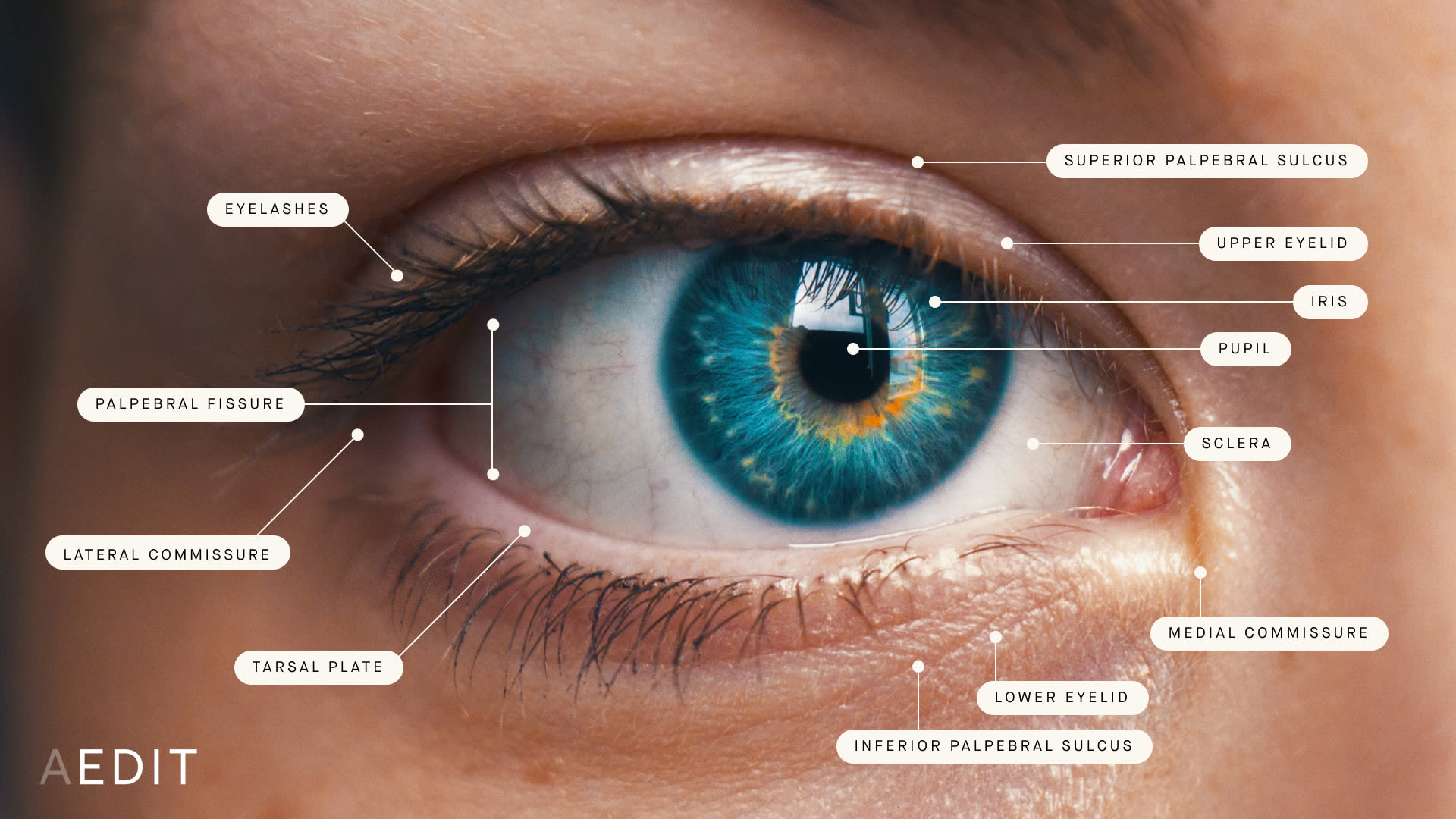
AEDIT
Try on Lower Eyelid Malposition - Lateral Tarsal Strip Canthoplasty Solutions
‘Try on’ aesthetic procedures and instantly visualize possible results with AEDIT and our patented 3D aesthetic simulator.
The Skinny
Average Recovery
7 weeks
Permanence
Temporary
Application
Surgical Procedure
Surgical
Yes
Cost
$1000 - $1500
The Specifics
What is a lower eyelid malposition - lateral tarsal strip canthoplasty procedure?
A lower eyelid malposition - lateral tarsal strip canthoplasty procedure is an oculoplastic surgical procedure targeting the lower eyelids for correction of various eyelid positions and aesthetic concerns. Abnormal eyelid position (eyelid malposition), eyelid retraction, eyelid ptosis, poor eyelid closure, and lower eyelid drooping/sagging can all be corrected through a lateral tarsal strip canthoplasty procedure.
The Anatomy of the Eye

Certain medical conditions can cause eye conditions including: Bell's Palsy, thyroid eye disease, and other lower eyelid abnormalities as the result of paralysis. These can lead to the need for an oculoplastic surgical procedure such as ectropion repair, lower eyelid margin ptosis repair, or other surgical correction to return the lower eyelid to a normal position.
What cosmetic concerns does a lower eyelid malposition - lateral tarsal strip canthoplasty procedure treat?
Who is the ideal candidate for a lower eyelid malposition - lateral tarsal strip canthoplasty procedure?
The ideal candidate for a lateral tarsal strip canthoplasty is an older individual with horizontal laxity of the lower eyelids, lengthened eyelids, issues with eyelid closure, eyelid retraction, eyelid ptosis, or those who those who regularly manipulate the under eye ocular surface such as contact lense wearers and those who use eye drops routinely. Lower eyelid malposition - lateral tarsal strip canthoplasty procedure is not recommended for those with a large globe, shallow orbit, or hypoplastic malar eminence (underdeveloped cheekbone below the lower lid and eye area).
What is the average recovery associated with a lower eyelid malposition - lateral tarsal strip canthoplasty procedure?
Most acute bruising, swelling, and tenderness around the lower lids resolves within seven to 10 days. Swelling and bruising can be lessened with ice packs and sleeping in an elevated position. Sutures on the lower eyelid skin are removed after three to five days, and deep sutures around ten days.
Most patients feel comfortable in public after two weeks. In some individuals, swelling of the lower eyelids can persist for up to four months. Full physical activity can be resumed after three weeks. If at one week post op, upper eyelid and lower eyelid asymmetry is noted patients should return to their plastic surgeon for stretching of the lateral tarsal strip.
What are the potential side effects of a lower eyelid malposition - lateral tarsal strip canthoplasty procedure?
Possible side effects of a lateral tarsal strip canthoplasty include persistent discomfort and bruising, recurrence of ectropion (outward turning of the eyelid), development of scar tissue, and granuloma formation.
What can someone expect from the results of a lower eyelid malposition - lateral tarsal strip canthoplasty procedure?
The results of a lateral tarsal strip canthoplasty is an immediately noticeable, but temporary, correction of a sagging, drooping, retracted, or outward turned (ectropion) lower eyelid. The results of the lateral tarsal strip canthoplasty will loosen over time.
What is the average cost of a lower eyelid malposition - lateral tarsal strip canthoplasty procedure?
A lateral tarsal strip canthoplasty plastic surgery procedure can cost anywhere from $1,000 to $1,500. The actual cost of a lateral tarsal strip canthoplasty is dependent upon location, plastic surgeon, and length and involvement of the plastic surgery.
Pros
- Eyelid Tightening
- Eyelid Elevation
Cons
- Not Permanent
- Asymmetry
Invasiveness Score
Invasiveness is graded based on factors such as anesthesia practices, incisions, and recovery notes common to this procedure.
What to Expect
The lateral tarsal strip canthoplasty corrects retraction and ectropion by elevating and tightening the eyelid. Here is a quick guide for what to expect before, during, and after a lateral tarsal strip canthoplasty.
The Takeaway
A lower eyelid malposition - lateral tarsal strip canthoplasty procedure is an eyelid surgery designed to correct numerous lower eyelid concerns. Abnormal eyelid position (eyelid malposition), eyelid retraction, eyelid ptosis, poor eyelid closure, and lower eyelid drooping/sagging can be addressed through this oculoplastic surgical procedure. This surgical correction provides temporary improvements to the lower eyelid position and appearance.





